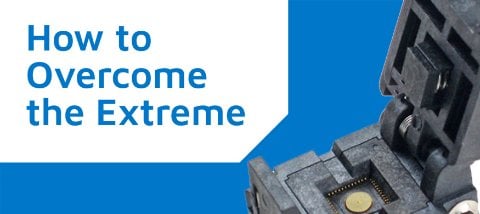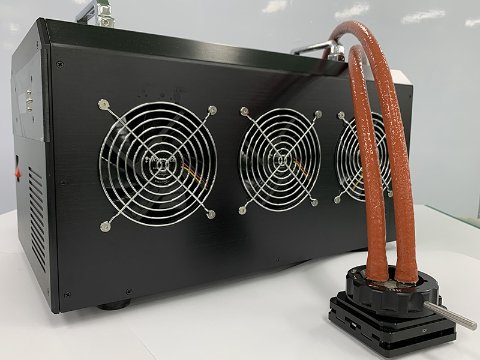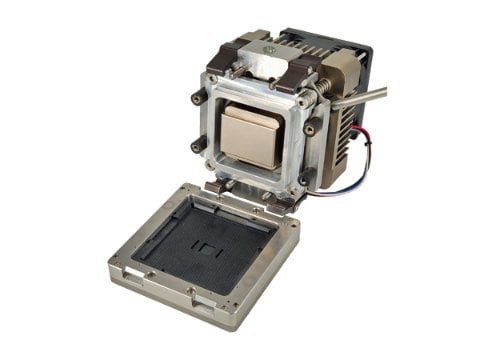- Industry-proven design, in-house tooling, molding, and machining, with 100% automated assembly.
- Extensive catalog of components, configurable options
- Zero-marking lid actuation contributes to higher yields.
- Market-leading electrical performance
Feature options
- Vertical pressure platen
- Heat sink
- HAST venting features
- Integrated thermal control with heater and sensor
- Reverse seating plane
- Max component clearance under the DUT
- 2 or 3 plate systems
- High temperature materials for above 200°C applications
This socket also uses the H-Pin contact technology providing wide RF performance capabilities and exceptional DC characteristics. The K-Series socket checks all the boxes: high frequency, high current, high temperature, low inductance, and Low loss. These features contribute to lower the cost of tests.






